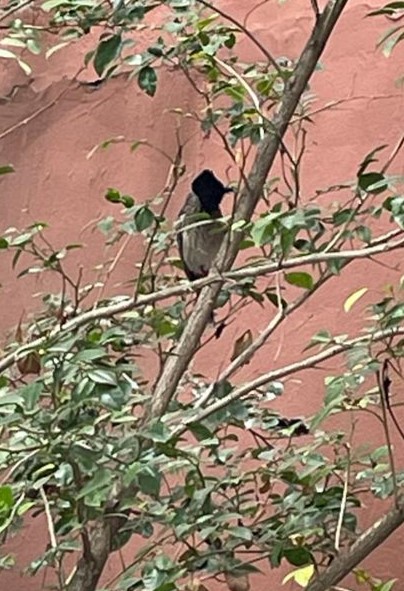The Red-vented Bulbul, செங்குதக் கொண்டைக்குருவி also known as Pycnonotus cafer, is a medium-sized passerine songbird. They can be easily recognized by their short crests, which give their heads a squarish appearance. Their bodies are dark brown and have a scaly pattern, while their heads are darker or black. They boast a white rump, a red vent, and a long black tail, tipped in white.
Red-vented Bulbuls usually eat nectar, flower petals, fruits, insects, and sometimes house geckos. They can generally live for up to 11 years in the wild. They are usually spotted in dry scrublands, open forests, plains, cultivated lands, and cities. Their nests are in the form of a small cup of dead leaves, bound with cobwebs and grass.
Commonly found in the Indian subcontinent including Sri Lanka extending to parts of Burma, Bhutan and Nepal. It is considered as one of the world’s most invasive alien species for its fruit eating habit in New Zealand, Argentina, Tonga, fiji, parts of Samoa, Australia, USA and Cook Islands which were places that this bird was introduced in.
It’s habit of swallowing the whole fruit which helps the seed to be intact aids in dispersing plant seeds.
General Status: Common.
IUCN Status: Least Concern.
Type: Resident Breeder.
Size: 19-20 cm.
Breeding Season: January – August (in India).Typical Clutch: 2 or 3 eggs.








